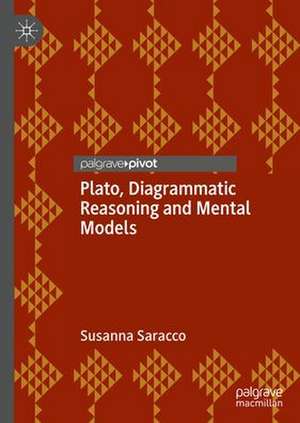Plato, Diagrammatic Reasoning and Mental Models
Autor Susanna Saraccoen Limba Engleză Hardback – 4 aug 2023
Preț: 235.76 lei
Nou
Puncte Express: 354
Preț estimativ în valută:
45.13€ • 49.03$ • 37.93£
45.13€ • 49.03$ • 37.93£
Carte disponibilă
Livrare economică 31 martie-14 aprilie
Livrare express 15-21 martie pentru 21.94 lei
Preluare comenzi: 021 569.72.76
Specificații
ISBN-13: 9783031276576
ISBN-10: 3031276574
Pagini: 91
Ilustrații: VII, 91 p. 5 illus.
Dimensiuni: 148 x 210 x 13 mm
Greutate: 0.27 kg
Ediția:1st ed. 2023
Editura: Springer Nature Switzerland
Colecția Palgrave Macmillan
Locul publicării:Cham, Switzerland
ISBN-10: 3031276574
Pagini: 91
Ilustrații: VII, 91 p. 5 illus.
Dimensiuni: 148 x 210 x 13 mm
Greutate: 0.27 kg
Ediția:1st ed. 2023
Editura: Springer Nature Switzerland
Colecția Palgrave Macmillan
Locul publicării:Cham, Switzerland
Cuprins
CHAPTER ONE: Introduction,- CHAPTER TWO: The Collaboration between Writer and Reader,- CHAPTER THREE: Visual Thinking,- CHAPTER FOUR: Diagrammatic Reasoning,- CHAPTER FIVE: Mental Models,-Chapter 6. Theoretical Adulthood and Structuralism.
Notă biografică
Susanna Saracco is a post-doctoral researcher, having received her PhD in philosophy from the University of Sydney, Australia. She is the author of the book Plato and Intellectual Development. Her pieces have been published, among others, in Plato Journal, Philosophia: Philosophical Quarterly of Israel and Metaphilosophy
Textul de pe ultima copertă
Saracco works from a primarily epistemological perspective on Plato but aims to broaden that with sustained interdisciplinary engagement with the philosophy of mathematics, philosophy of science, and cognitive science. Her overall argument is that Plato’s dialogues are best understood as an ongoing intellectual engagement between the reader and the writer. As the reader engages with various visual models within the texts, the reader moves from a perspective of theoretical childhood to theoretical adulthood. She maps this intellectual development of the various stages on the divided line. The book is very well-written and thought provoking.
- Anne-Marie Schultz, Baylor University, Waco, US.
This book analyses the role of diagrammatic reasoning in Plato’s philosophy: the readers will realize that Plato, describing the stages of human cognitive development using a diagram, poses a logic problem to stimulate the general reasoning abilities of hisreaders. Following the examination of mental models in this book, the readers will reflect on what inferences can be useful to approach this kind of logic problem. Plato calls for a collaboration between writer and readers. In this book the readers will examine the connection between diagrams and discovery, realizing the important epistemic role of visualization. They will recognize the crucial role that diagrams play in problem solving. The logic problem elaborated by Plato is addressed considering the epistemic function of mental models. These models introduce to an advanced stage of cognitive development, in which reasoning uses in its investigations a higher-level of mathematical complexity, represented by structuralism.
- Anne-Marie Schultz, Baylor University, Waco, US.
Susanna Saracco is a post-doctoral researcher, having received her PhD in philosophy from the University of Sydney, Australia. She is the author of the book Plato and Intellectual Development. Her pieces have been published, among others,in Plato Journal, Philosophia: Philosophical Quarterly of Israel and Metaphilosophy
Caracteristici
Diagrammatic reasoning makes emerge Plato’s cognitive stimulation of his readers Mental models challenge the logical competence of the readers, promoting the rational growth traced by Plato’s word Structuralism points to a use of mathematics pertinent to an advanced stage of cognitive development
